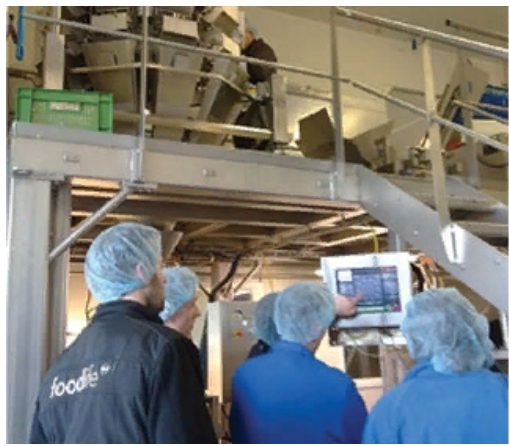The produce industry has had its share of food safety challenges in recent years.
But it’s not alone.
Speaking during an education session at United Fresh 2012 in Texas, Margaret Hardin, Ph.D., vice president of technical services for IEH Laboratories and Consulting Group, said the produce industry would do well to learn from its friends in meat and dairy.
“The dairy industry has dealt with it, the meat industry has dealt with it,” she said. “I hope the produce industry will learn now through what they have experienced the last couple of years to write their own history.”
Contamination in deli meats and poultry in the 1980s led to many of the food safety regulations on the books today, said Hardin, who has handled multiple on-site food safety assessments in food processing facilities over the years.
What you can’t see
It’s typical, she said, to encounter denial — managers and staff who don’t believe contamination could have happened in their facilities. That’s because the cause is often hidden — in nooks and crannies.
But anything that comes into contact with food surface has potential to contaminate. And that’s where equipment is so key.
Take hollow rollers. Not a good idea, Hardin said, because they have the potential to become “microbial growth niches … harboring organisms after routine sanitation.”
“If you have a nasty smell in an otherwise clean area, a microbial niche exists,” she said.
Microbial growth niches are difficult to clean, Hardin said, citing worn hydraulic seals, chain and blade guards, O-rings, gaskets, the insides of cabinets and ledges as potential culprits.
“Conveyors — the frameworks — are they hollow? Are table legs hollow?” she said.
If so, she recommended replacing them with solids, relating the story of a client who had just ordered a bunch of new tables with shelves, set screws and hollow legs.
“I made him send them back,” she said. Electric panel boxes can become microbial niches. “Inside the panel box, around gaskets, in and around start/stop buttons and emergency shutoffs — if somebody’s working on the line, they’re touching products, then touching buttons, that on-off button is a food contact surface,” she said.
The solution? Simple, according to Hardin.
“If you’re not sure, break the equipment down,” she said. “Take swabs.
“If you have anything screwed on, bolted on, metal to metal — anywhere that water can seep in, take it apart. These have all been documented microbial niches somewhere in some plant.”
In fact, growth niches need to either be designed out of the system or managed as part of the process, she said.
Easy-cleaning features New equipment designs for fresh-cut products could be taking a page from Hardin’s book.
New equipment designs for fresh-cut products could be taking a page from Hardin’s book.
Rudi Groppe, president and engineering manager for Heinzen Manufacturing International, said machines are being created with open frame designs to allow for “full cleaning ability.”
“All conveyor designs incorporate some form of sanitation access,” Groppe said. “As the process moves from low-risk to high-risk, we see all conveyors with quick-release take-ups to relieve belt tension, belt lifters to allow frame access and CIP spray bar systems to minimize water consumption and labor to sanitize the belt.”
Line workers can elevate belts and physically wash in all of
“(If you have) an area you can’t physically see on a piece of equipment, it is hard to validate that you actually cleaned it.”
Wash systems now have conveyor belts that are designed to open up for complete sanitation access,he said, and some don’t have sides at all. Some newer wash tank conveyors feature sides and belts that flip open.
“Processing plumbing and piping have now shifted to 100 percent stainless tubing versus PVC pipe, as biofilm is a food safety hazard that will not be going away,” Groppe said.
At some point, such piping runs need to be cleaned using hot water treatment or a closed loop chemical treatment system, and “several customers are going to be on the front of the curve if this becomes a standard sanitary procedure,” he added.
Using air blowers for belt cleaning is common these days, though the blowers generate heat that creates an environment where bacteria can grow. Heinzen’s blowers are designed so that the impeller can be physically pulled out of the housing to facilitate sanitation.
CombiScale’s multi-head scale is also built with an open frame. A tool-less adjustable rotating hopper on top just needs to be moved to the side, versus having to be unscrewed and taken apart, for cleaning. Electronics are stored in a remote cabinet that can be located away from the equipment.
“When you’re cleaning and sanitizing, there’s no risk of getting water in the electronics because now the electronics can be mounted up to 20 feet
away,” said Nick Taraborelli, vice president of sales and marketing for CombiScale. “That’s a big advantage in a sanitation facility, because your worst enemy is water getting into your electronics.”
With the growth Taraborelli said his company has been seeing in the fresh-cut industry, equipment originally designed for packaging dry snacks may be more complicated to clean when used in fresh-cut applications.
“I would say in the produce industry, we are most often competing with features,” Taraborelli said. “In the snack food industry, because they don’t clean their machines like the fresh-cut industry (has to), these features oftentimes are neglected, whereas in the produce industry, cleaning is so important.
“USDA has been putting far more focus on keeping companies to a much higher standard.”

